Graphics on the Web
The Internet emerged from a Cold War project initiated by the United States Department of Defense. The Advanced Research Projects Agency (ARPA) wanted to create a way to communicate and share information between networked computers. The objective of ARPANET was to maintain communication even if one part of the network was damaged due to disaster or nuclear war. As with many firsts, there are conflicting points of entry to this technology. For instance, before ARPANET came online in 1969, researchers in France and England separately developed packet switching, an essential component of routing data over a network.
Through the 1980s the number of hosts, users, and technological advancements expanded. Desktop computers and dial-up modems brought the Internet into the home. President Bill Clinton adopted the email address president@whitehouse.gov when the US White House created a web site (www.whitehouse.gov) in 1993. In that same year, the National Center for Supercomputing Applications (NCSA) released Mosaic, the first web browser to display images inline. In 1994 you could shop online and order pizza from Pizza Hut’s web site.
Despite its short history, the Internet has seen rises and falls in techno-utopianism, a made-for-technology depression known as the dot-com bubble burst, and a resurgence of interactivity on user-generated content sites such as MySpace, Facebook, LinkedIn, YouTube, and Flickr. Now that web surfers have become user-generated content creators, every Internet user's education should include the basics of image optimization, uploading, and publishing. In the following exercises, we will optimize an image for the web using Gimp, upload the image to flickr.com, and publish that image on a blog.
The Wayback Machine is an archive of web pages dating back to the early 1990s. We used the Wayback Machine to view web sites from the 1990s to compare them with the same sites in 2008. Notice how the aesthetics of web graphics has changed in the past two decades. These new aesthetics are possible due to increased network speed, changes in programming techniques, and the evolution of information design. Greater connection speeds result in the ability to upload and download larger files. Graphics are larger, more frequent, and more colorful on current web sites than the graphics made for the web in the 1990s.
| Note: The Wayback Machine contains an archive of over 85 billion web pages. You can use this search engine at http://www.archive.org. . |
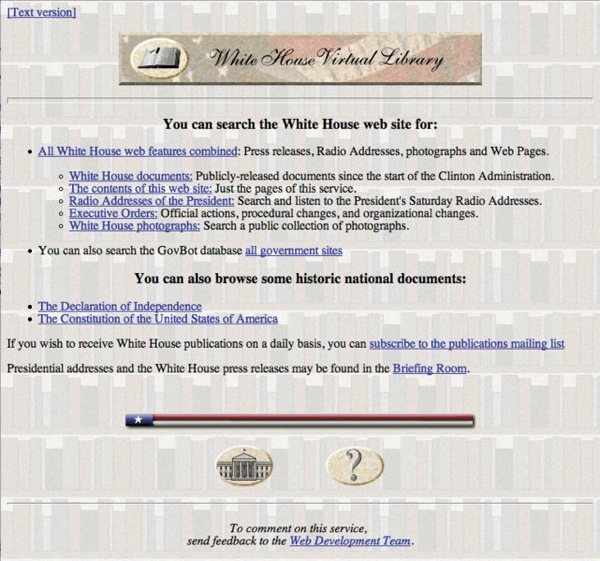
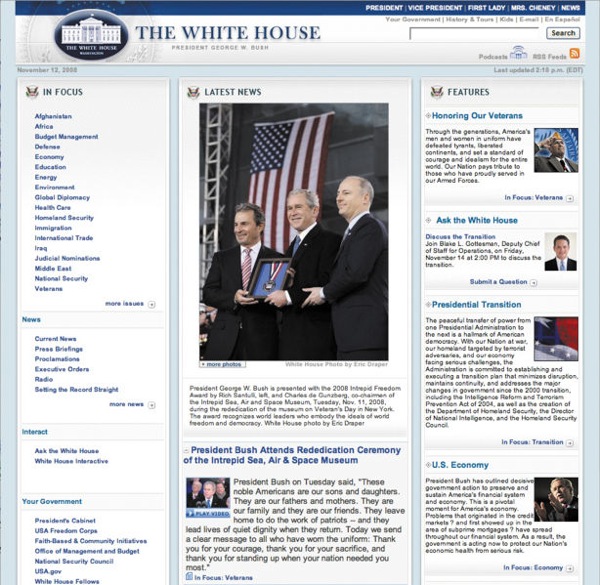
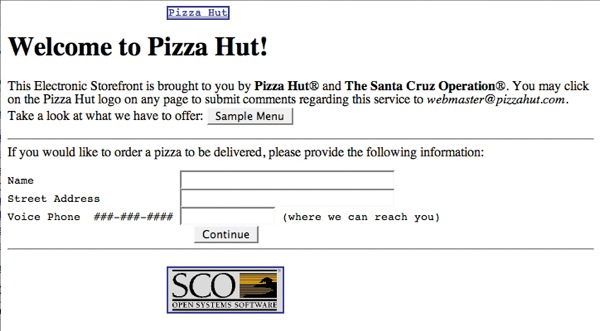

From top to bottom: Whitehouse.gov on October 23, 1997; Whitehouse.gov on November 5, 2008; Pizzahut.com on February 14, 1997; Pizzahut.com on November 5, 2008.
Exercise 1: From digital input to web ready
1. Get any image from your digital camera or scanner and open it in Gimp.
2. Adjust the tonal range and color to your liking by creating adjustment layers.
| Tip: Monitors generally have display settings such as 1280 by 800 or 1024 by 768 pixels. A file whose longest side is 1600px is likely more than big enough to fill a web browser window on any monitor. The only measurement unit relevant to us in this exercise is pixels, as the image will be shown on a platform that also uses pixels. |
3. Save this file as a master copy by choosing File > Save As, add _master to the file name and then choose XCF as the file format. We saved ours as orbitz_master.xcf.
4. The image from the wiki is straight off a 7-megapixel digital camera, and is much larger than can be displayed on a web site. Choose Image > Scale Image and notice the size of your image in pixels. Notice the icon showing a chain. This indicates that Gimp will maintain the aspect ratio (or the proportions) between the height and width of your image. Change the pixel dimensions in the box marked 'Width' so the largest dimension is no larger than 1600px. If your image is less than 1600px on its long side, you can use the Cancel button to close this dialog box without making any changes.

5. Add an unsharp mask (Filter > Enhance > Unsharp Mask). Make sure you have the image layer selected, and not an adjustment layer. We used the following settings for the Orbitz ad photo: Amount: 0.25; Radius: 0.6px; Threshold: 0 levels. Your image may require different settings.
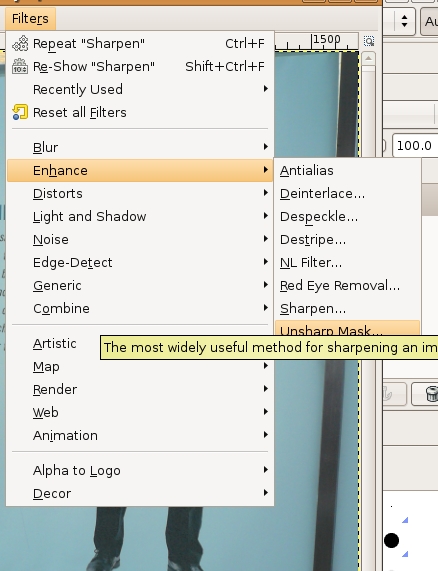
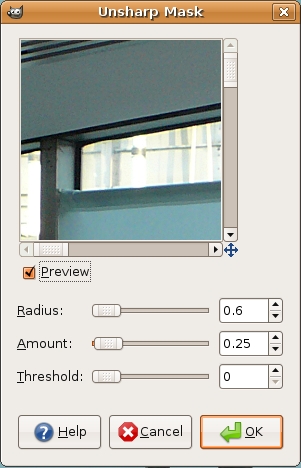
6. Choose File > Save As. As a general rule, photographic images and other images with more than 256 colors are saved as JPEG files. Graphic images - images with few colors such as logos and line art - are saved as GIF or PNG files. Since this image is a photograph, select JPEG from the Format pull-down menu. Give the file a name that ends in '.jpg' (we used orbitz_web.jpg).
| Note: The human eye cannot detect image compression artifacts if used with a light touch and when the image is viewed on a computer screen. Compression runs from 0 to 100. Zero is a very low quality, where you will definitely be able to notice the loss of quality in the image, while the maximum 100 level, although still having had image data thrown away, shows no visible decline in quality. The trade-off is that more compression creates a smaller file. Weigh your needs for file size against your perception of image quality to decide what level of compression to use. |
7. Press the Return key after entering a file name ending in '.jpg' and you will see the Save as JPEG dialog box. Click Advanced Options to reveal the options that will allow you to customize this image for display on the web.
8. Adjust the Quality slider to 60. Saving a file for the web compresses the saved image into a smaller file size by removing color information and pixel detail. This is referred to as lossy compression.
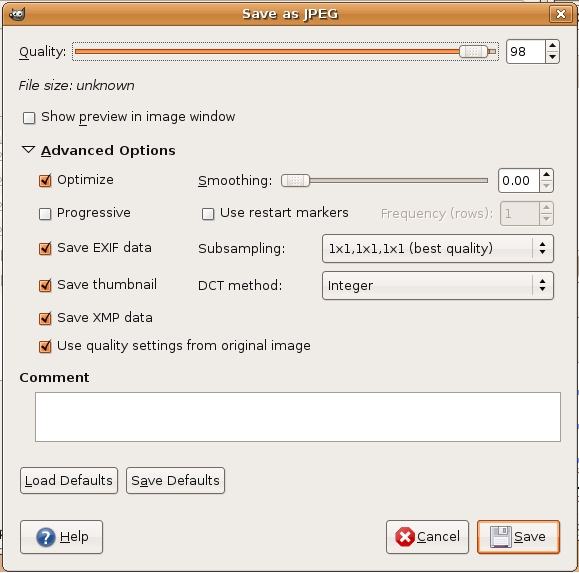
9. Choose File > Open, then click once on orbitzad1.jpg. Don't actually open the file, just notice that to the right of the file name you can see the file size is listed as 4.40 MB. Now click once on orbitz_web.jpg. The file size of the optimized image is 168 KB. The compressed image is 38% of the original file size. This is important because the smaller the file size is, the faster the image will download as part of a web page.
10. Reduce the quality to 5. Notice how much detail is lost. Visible compression artifacts are introduced into the image. Our file size is much smaller at 44.3 KB, but we have compromised too much image quality for the sake of the smaller file size.
| Tip: The Zoom (shaped like a magnifying class) and Move (a four-way arrow) tools allow you to get a closer look at the image and move to important details. |
11. Go back to orbitz_master.xcf, Save As, and name your file with an underscore and the word "web" like we did when we named ours orbitz_web.jpg. Set the Quality setting to 98, and save the image. Remember web standards when naming files: only use lowercase alphanumerics, underscores, and dashes.
| Watch Out: When you open a file and resize it, it is no longer the master file. This may seem confusing, but it is a situation you will commonly experience when maintaining master files and resized web ready files. There's nothing stopping you from using Save As to save your scaled-down master file as well, but it's probably overkill and could mislead you later into believing it's the largest version you have. |
14. Open the JPEG you just saved for the web (ours is orbitz_web.jpg) in Gimp, and notice that there are no adjustment layers. By saving for the web, the image is automatically flattened. Layers are collapsed onto one background layer.
Exercise 2: GIF vs JPEG
As stated in Exercise 1, photographic images with many colors are saved as JPEG files, and graphic images with few colors are saved as GIF files. Following these rules will produce better images and smaller file sizes.


The top two images demonstrate the master file on the left and a JPEG file on the right side. The bottom two images are of the master file on the left and a GIF file on the right side. It should be noted that these images were saved as PNG files in order to be visible on this web page, so this demonstration doesn't work as well on this platform as it does in print. Nevertheless, notice in the above images that the photograph saved as a JPEG (top right) has a higher visual quality than the same file saved in GIF format (the lower right image). The GIF file also happens to be a larger file size than the JPEG.
Exercise 3: Uploading to Flickr
We will upload this photo to Flickr, and then post it to a WordPress blog in the next exercise. Our example was a post to the blog maintained by the Anti Advertising Agency (http://antiadvertisingagency.com/). In their words, "The Anti-Advertising Agency co-opts the tools and structures used by the advertising and public relations industries... Through constructive parody and gentle humor our Agency’s campaigns will ask passers by to critically consider the role and strategies of today's marketing media as well as alternatives for the public arena." (http://antiadvertisingagency.com/our-mission).
Our post is critical of this Orbitz ad for its lack of imagination. Advertising is one of the places where a society imagines the future, embraces technology, and constructs reality from fantasy. In this ad, the models have a lot of technology and community at their fingertips, and Orbitz advocates that the traveler call someone to pick him up at the airport, rather than directing the traveler to a website that might advise the traveler on how to locate their final destination via public transportation, such as Google Maps. Technology and advertising can change habits and practices, but only when the advertisements imagines a new and better future. Our criticism is about putting another car on the road. We are not, however, criticizing the design!
1. Log in to your account on Flickr.com. If you do not have an account already, you will need to create one. Flickr is part of Yahoo!, so either use an existing Yahoo! ID for Flickr, or create a new one. Web services like Facebook, Picasa, and others also have integrated uploader programs for free that work well, too.
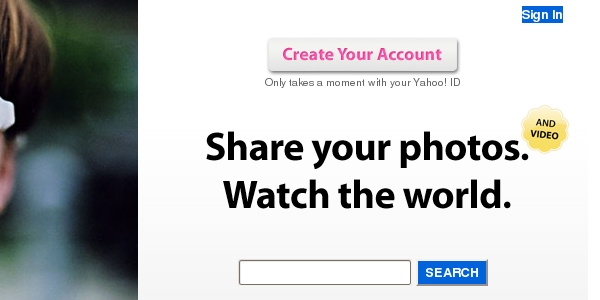
2. In the Flickr interface, click on You > Upload Photos and Videos.
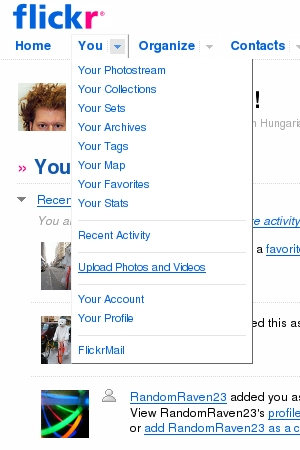
3. Click on Choose photos and videos. In the window that comes up, locate your JPEG (ours is orbitzad_web.jpg), and click Select.

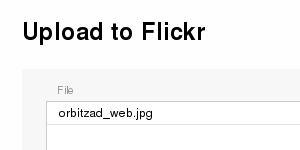
4. Click Upload Photos and Video.
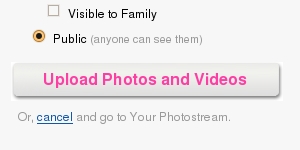
5. Click on Add a description.

6. Change the title of your file, if you would like to. In this case, we changed the name to Lack of Imagination.

7. Give the file a description, when we posted it was "An unimaginative Orbitz ad about an unimaginative use of technology."
8. Give the file tags. Tags are what allow people to find your file in an image search. For this image, the tags are "Advertisement, Orbitz, Cell phone, suit, luggage, travel, traffic, JFK"
9. Save the image. The image is now at the front of your photostream.
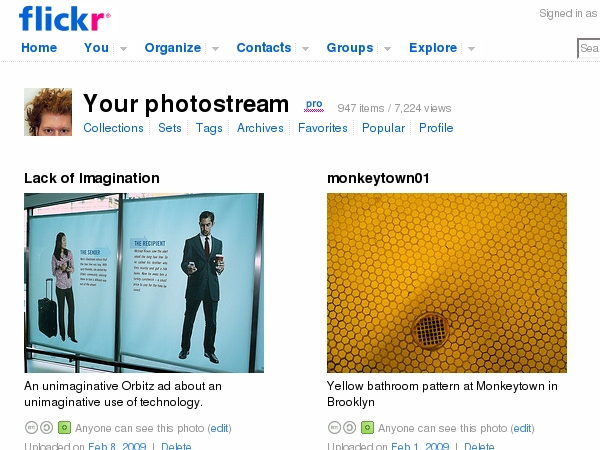
10. Click on the image to navigate to the the image page.
11. Press the All Sizes button.
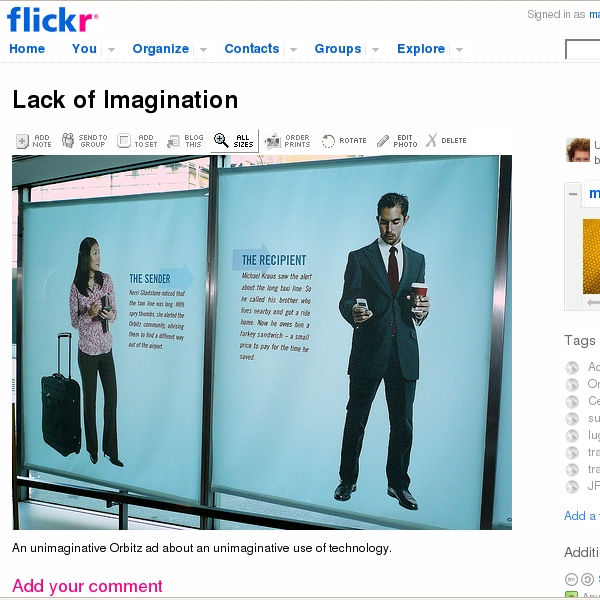
12. Select the 500 pixel wide Medium image.
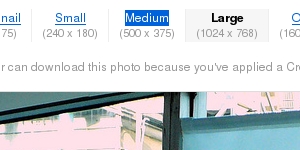
13. Copy the code from the bottom of the page that allows you to link to your image. Navigate to your blog. We made our post at AntiAdvertisingAgency.com.
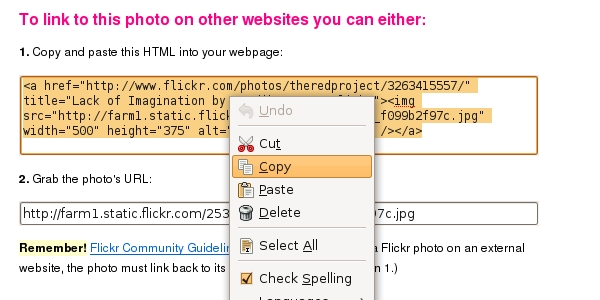
Exercise 4: Posting to a blog
While setting up and maintaining a blog is somewhat beyond the scope of this book, so many people have blogs these days, that we will assume that you either have a blog, or have used a blog. If this is not true, focus on learning how you can load an image from one web site onto another with simple, pre-written code. This is relevant for Chapters 15 - 17.
| Tip: If you don't already have a blog, you can get a free WordPress blog at WordPress.com. We like WordPress because there is a large community of users, great documentation, loads of themes and plug-ins, and it is open source (meaning, the source code is available for augmentation and manipulation.) Tumblr, Blogger, Moveable Type, and TypePad are also quality blog platforms. |
1. Every blog interface is slightly different, but all share certain procedures. First, log in.

2. Click on the Write a New Post button.
3. Give your post a title. We called ours "Orbitz Ad: Distinct Lack of Imagination."
4. Paste the image code that is in your clipboard into the post.

5. Write your post.
6. Add tags that will help a searcher land on the viewpoint you want to share. Tags are a way of categorizing and organizing the content on a site. Generally you want to use tags that you have previously used. So if you have initially used a tag "design" you probably would want to use that tag rather than introducing something like "designey" or "designed." Working within the existing tag categories on the Anti Advertising Agency blog, we tagged our post "billboard, branding, justfollowingorders, not creative, self-loathing, you don't need it" because we are blogging about it from a critical point of view. When you are applying tags, try to put yourself in the shoes of a person searching the web. Ask yourself what words they might use in hopes of finding the content you are creating.
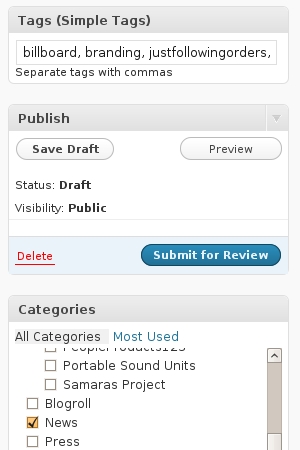
7. Select a category, in this case "News."
8. Submit your post. If you are writing on your own blog, it is likely that you will click a button labeled Publish.
9. Click on the View Post link to view your post. The post we made is located at http://antiadvertisingagency.com/news/orbitz-ad-distinct-lack-of-imagination






